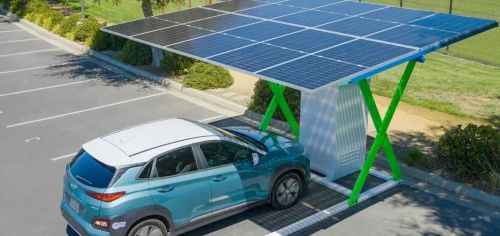


Smart Tips for EV Charging in Hot Summer WeatherDriving Your EV in Summer: How to Protect Your Battery from Heat
Driving Your EV in Summer: How to Protect Your Battery from Heat
As a leading EV charger manufacturer in China, LiCB Charge delivers dependable AC and DC electric vehicle charging stations along with comprehensive charging solutions.
Driving an electric vehicle (EV) in summer is safe, but high temperatures can affect battery health. Unlike gas engines, EVs rely on lithium-ion batteries, which are efficient but sensitive to heat. Prolonged exposure to high temperatures can reduce battery capacity, decreasing driving range and charging efficiency over time.
Modern EVs have thermal management systems to help regulate battery temperature, but it’s important to adopt smart charging habits during hot weather to protect your battery and maintain optimal performance.
The optimal temperature for EV batteries is between 20°C and 25°C (68°F to 77°F). At these levels, batteries deliver peak range, faster charging, and longer life. When ambient temperatures rise above 35°C (95°F), batteries risk overheating, which can accelerate wear and reduce effectiveness—especially during heatwaves.
1. Maintain a Mid-Range Charge (30–80%)
Avoid charging to 100% or letting your battery drop to zero daily. Lithium-ion batteries last longer when kept between 30% and 80% charge. Partial charges generate less heat and reduce stress, which is crucial during summer months.
2. Limit Use of Rapid Chargers
DC fast chargers can quickly top up your battery but generate significant heat. Frequent use during hot weather increases thermal strain, accelerating battery degradation. Use fast chargers mainly for emergencies or long trips, and prefer slower Level 2 chargers for daily use.
3. Charge at Night or in the Shade
Charging during cooler nighttime hours helps reduce battery heat and eases grid demand. If nighttime charging isn’t an option, pick shaded or covered charging spots to minimize direct sun exposure, which can raise battery temperatures by several degrees.
4. Use Level 1 or Level 2 Chargers for Overnight Charging
Slower chargers (standard 120V outlets or 240V home units) produce less heat and are gentler on the battery. Many EVs allow scheduled charging during off-peak hours, combining cool temperatures with energy cost savings. Keeping your vehicle plugged in overnight also supports battery conditioning systems.
5. Plan Routes and Charging Stops
For summer trips, plan charging locations ahead using apps like PlugShare or ChargePoint. Choose stations with shade and amenities to stay comfortable during charging. Being prepared helps avoid range anxiety and reduces stress on the battery during hot weather.
Use Cabin Preconditioning: Cool the car while plugged in before driving to reduce battery load.
Avoid Fast Acceleration: Smooth driving reduces heat generation and conserves battery power.
Monitor Battery Health: Use your EV’s app or dashboard to keep an eye on battery temperature.
Park Indoors or Use Sunshades: Whenever possible, park in a garage or use reflective sunshades to lower interior and battery temperatures.
High summer temperatures don’t have to harm your EV if you charge wisely and adapt your driving habits. Avoid excessive heat exposure by maintaining moderate charge levels, favoring slower chargers, and planning trips thoughtfully. These habits will help maximize your EV’s battery life, range, and overall performance.
While battery technology continues to improve, proactive care remains the best way to protect your investment today. So this summer, stay cool, charge smart, and enjoy driving your EV at its best—even under the sun.Know more about Google SEO Directory
